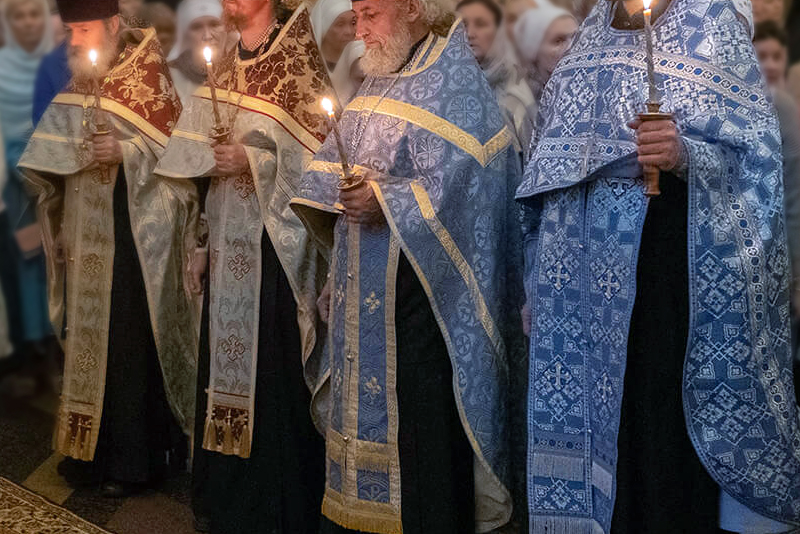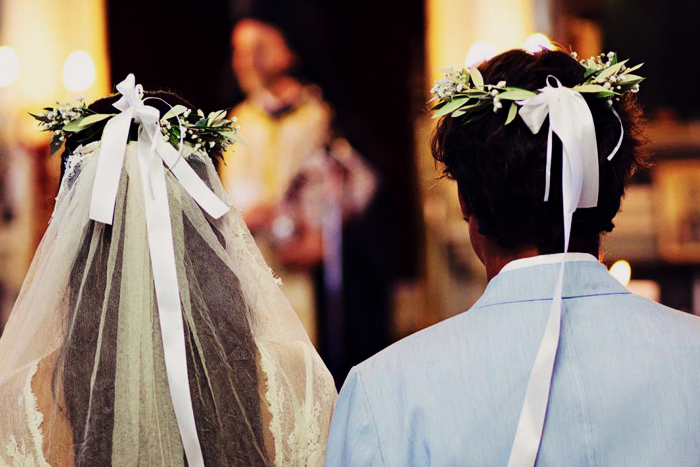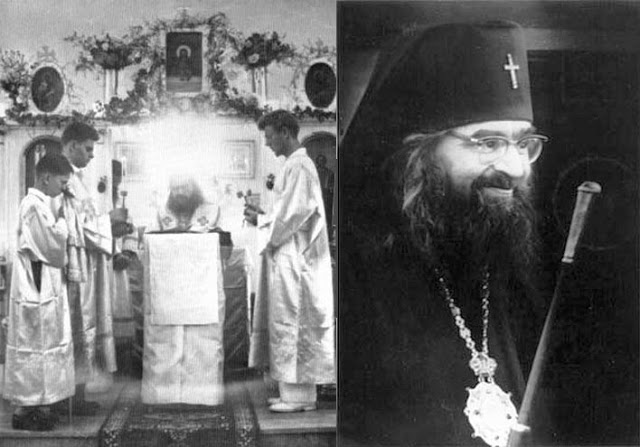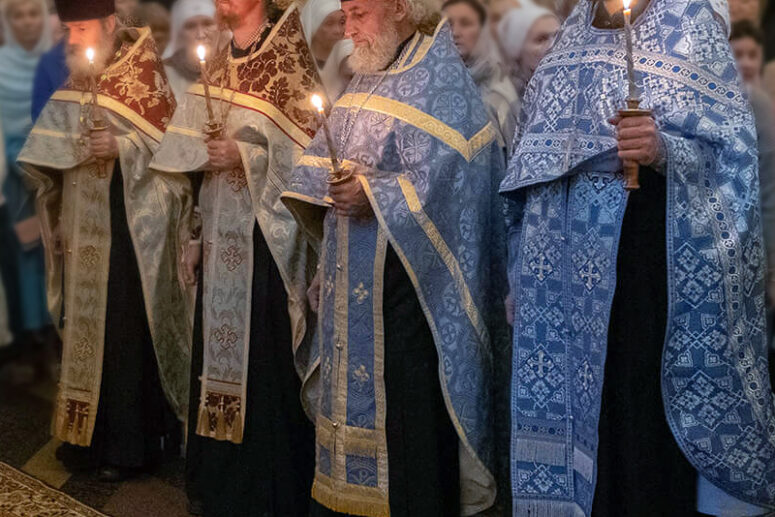
Anyone who has ever encountered church ministers is familiar with their vestments, designed and worn to distinguish the clergy from the laity. Many people also know about the symbolic meaning of these vestments. The famous theologian Fr Pavel Florensky taught that besides covering the body, clothing also has a deep spiritual meaning. With its unchangeable dress code the Church emphasizes the transcendence of her life. However, few people know that the circumstantial factors influencing this or that part of the ecclesiastic attire often depend on the weather.
For example, factors like cold nights, torrential rains, dust storms and monsoon winds have constantly caused representatives of eastern monasticism serious health problems. Following the example of the Bedouins, the eastern desert monks began using warm fabrics to wrap their heads and faces. This really helped and soon took root in the monastic attire with the introduction of the koukoulion. A koukoulion combined with a kamelaukion is known today as the monastic klobuk, a widely recognizable attribute of monasticism. The klobuk has two covers (epanokamelavkia) descending from the head covering onto the chest and tied, if necessary, to protect the face from dust and sand.
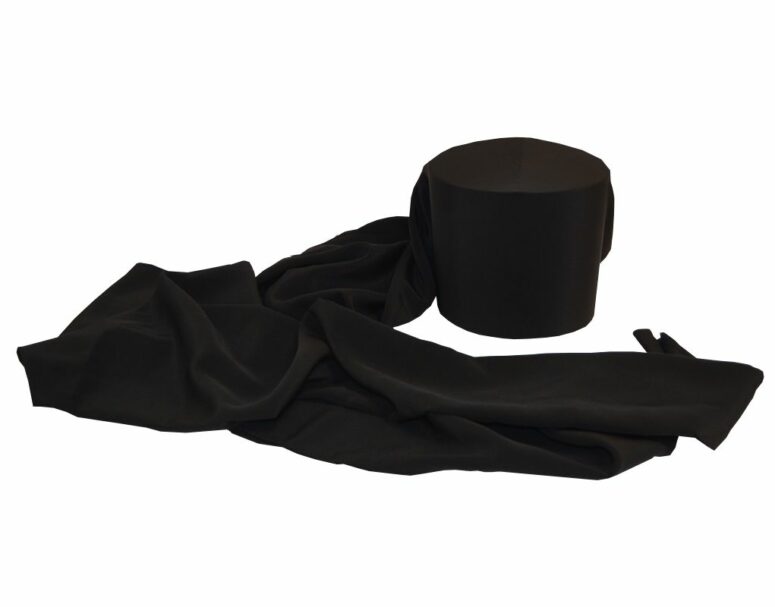
The Russian clerical vestments have undergone particularly many changes. Unfortunately, having adopted the Christian faith and traditions from Byzantium, the Slavs were unable to also adopt its climate, and soon the Byzantine vestments turned out to be quite impractical in Russian realia.
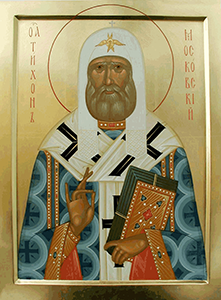
For example, the Greek omophorion was designed to lay horizontally on the shoulders, hanging along the edges of the bishop’s chest. This left the neck uncovered, which was perfect for the hot Greek climate but made it very easy to catch a cold, serving in an unheated church. Therefore, the omophorion worn by Russian bishops was raised higher, equipped with a warm lining and began to function as a warm scarf. In the iconographic tradition however, the omophorion is depicted in the same way as it was in Byzantium, even if a Russian holy hierarch is represented on the icon.
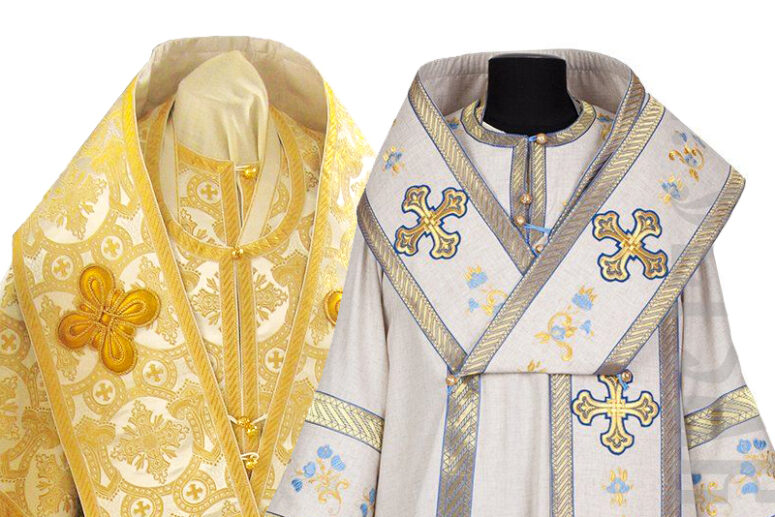
The wooden or iron bishop’s staff became extremely cold and unusable in the cold weather. This resulted in the appearance of the crosier grip, an attribute consisting of two scarves, nested one inside the other and attached to the grip of the bishop’s staff. The bottom scarf protects the hands from freezing to the staff itself, while the top one covers it in the low outside temperatures, serving as an ordinary mitten.
Following (or, most likely, in parallel with) the transformation of the omophorion, the Greek phaelonion, designed for a hot climate, also underwent certain changes. In contrast with the Greek phaelonion, lying on the shoulders like a cloak, the Russian one has a raised collar in the back, serving to protect the neck and head from the cold air.
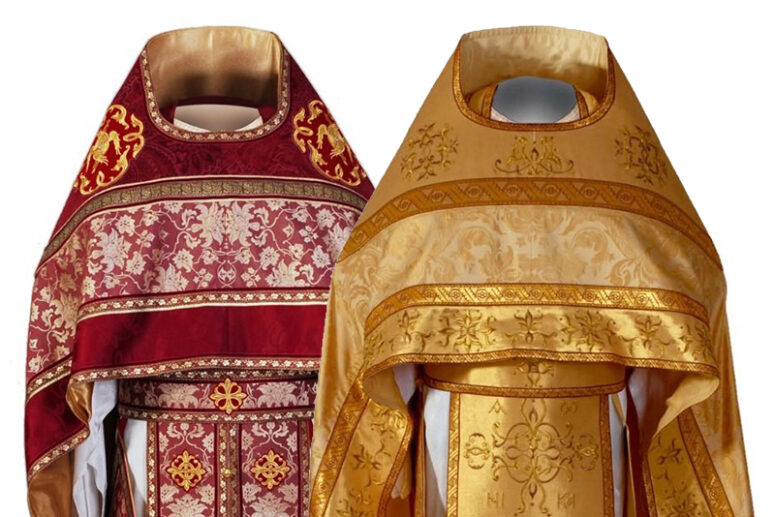
Fastening buttons on the epitrachelion is also an invention of the Russian Orthodox clergy. The epitrachelion originally consisted of two narrow strips of fabric, lying around the neck and descending down the left and right shoulders. However, this method of wearing the epitrachelion turned out to be very inconvenient, because an occasional gust of wind was enough to blow it off. Then the idea came to modify it with buttons that would fasten on the chest. Initially, such epitrachelia were used for outdoor services, but soon they became widespread. The epitrachelia in the form of two bands hanging on the shoulders is still worn, for example, by the Roman Catholic clergy, who tie them with strings.
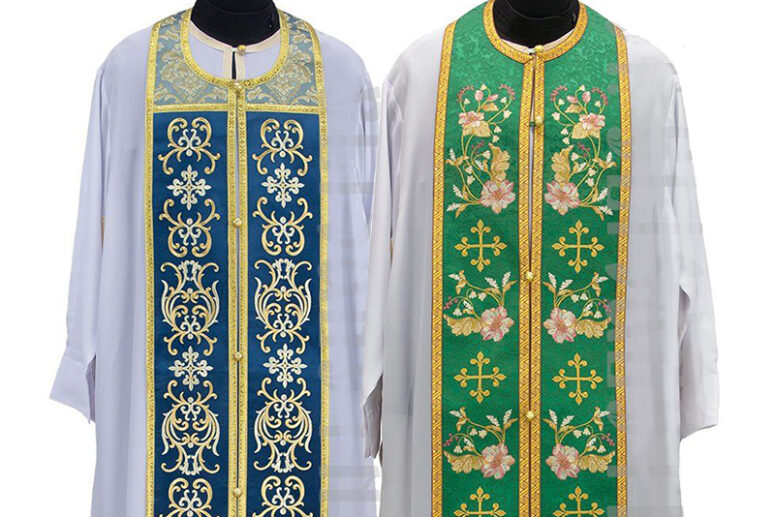
Church history knows cases when vestments were made of animal skins. One such vestment was made in Alaska by St Innocent of Irkutsk, after he arrived there on a mission and tried to serve at a temperature of minus 40 ° C in vestments made of brocade, widely used at that time.
To conclude, each element of the canonical church attire has a deep symbolic meaning and is designed to elevate the mind. At the same time, church vestments are still objects of the carnal world and can be modified to adapt to a specific need. “The sabbath was made for humankind, and not humankind for the sabbath” (Mark 2:27).

